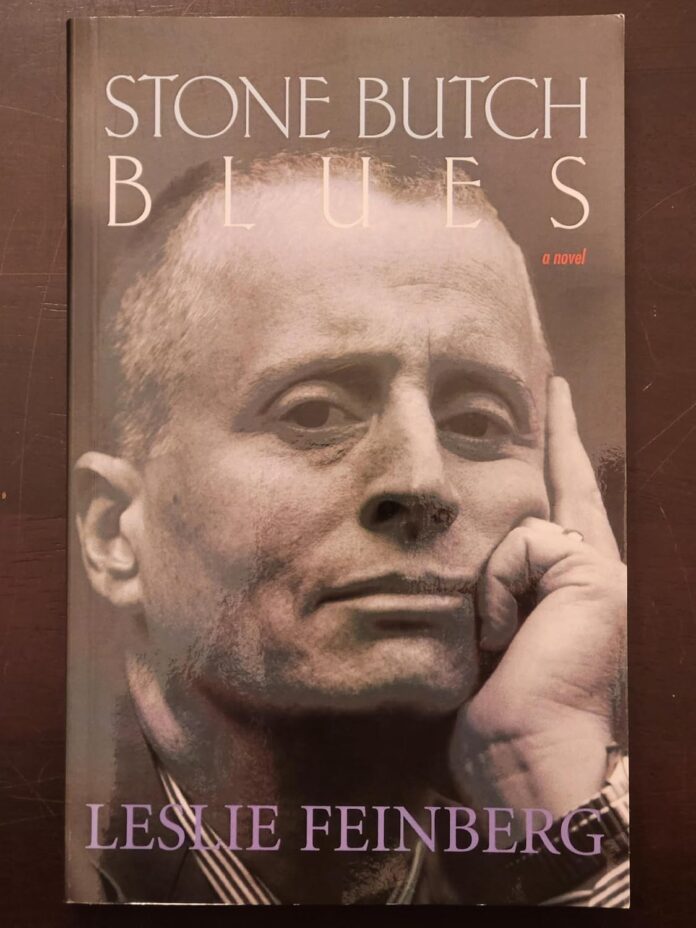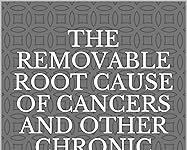In a literary landscape that continually seeks to give voice to diverse experiences, “stone Butch Blues” stands as a poignant and unflinching exploration of identity, struggle, and resilience. Leslie Feinberg’s groundbreaking novel immerses readers in the turbulent journey of Jess Goldberg, whose quest for self-understanding unfolds against the backdrop of a society rife with prejudice and upheaval. This review delves into the layers of Feinberg’s narrative-its raw emotional depth, its portrayal of gender and community, and its enduring impact-inviting readers to reflect on the complexities of identity and the courage it takes to live authentically.
The Landscape of Identity in Stone Butch Blues and Its Impact on Readers’ Understanding of Gender Fluidity
Stone Butch Blues masterfully navigates the intricate terrain of identity, challenging conventional binaries and illuminating the fluidity frequently enough overlooked in mainstream narratives. Through the protagonist’s journey, readers encounter a vivid portrayal of gender as a spectrum rather than a fixed point, inviting empathy and deeper reflection.The seamless intertwining of personal struggle and societal prejudice presents a landscape were resilience is not merely survival but a radical act of self-definition in a world reluctant to accept ambiguity.
The novel’s influence on readers extends beyond its narrative, fostering a space for dialog and understanding around gender nonconformity. Key themes resonate through the text, such as:
- Resistance: The defiance against rigid norms that restrict authentic self-expression.
- belonging: The search for community amidst alienation and marginalization.
- Transformation: the evolving nature of identity shaped by both internal and external forces.
| Theme | Impact on Readers |
|---|---|
| Gender Ambiguity | Encourages openness to diverse identities |
| Community Bonding | Highlights the power of chosen families |
| Emotional Resilience | Models strength amid adversity |
Unpacking the Themes of Resilience Amid Adversity in the Harsh Socio-Cultural Context of Stone Butch Blues

Key thematic elements repeatedly surface throughout the story, reflecting this complex dance between hardship and hope:
- Community Solidarity: Bonds between individuals become lifelines, offering protection and understanding where mainstream society fails.
- Identity Fluidity: The fluid exploration of gender and self challenges rigid expectations, illustrating resilience as an evolving process.
- Internalized Conflict: Characters confront thier own struggles within,exposing the psychological toll of navigating a world that often rejects them.
| Theme | Impact on Characters | Symbolic Depiction |
|---|---|---|
| Community Solidarity | Creates safe havens | chosen families |
| Identity Fluidity | Empowers self-definition | Gender performance |
| Internalized Conflict | Generates personal struggle | Mirror reflections |
Character Development and Emotional Depth Portrayed Through Jo’s Journey of Self-Discovery and acceptance

At the heart of the narrative is Jo, whose path is carved with both fragility and fierce determination. The portrayal of Jo’s emotional landscape is nothing short of masterful, capturing the nuances of longing, alienation, and courage. Through each challenge and tender moment, readers witness a profound transformation-one that moves beyond surface-level identity into the core of self-acceptance.Jo’s story underscores how resilience emerges not in the absence of hardship, but through the constant, quiet act of standing true to oneself.This journey dismantles stereotypes, presenting a character who is complex and deeply human, offering a mirror to anyone grappling with their own sense of belonging.
The emotional depth is further enriched by the supporting cast, whose interactions with Jo illuminate different shades of identity and community. The following elements help bring Jo’s inner world to life:
- Moments of Vulnerability: Instances where Jo’s guard slips reveal the tender realities behind ostensibly tough exteriors.
- Interpersonal Conflict and Care: Relationships that challenge and nurture Jo contribute to the nuanced depiction of growth.
- Symbolic Milestones: Key events that symbolize self-reckoning and milestones in Jo’s acceptance journey.
| Aspect | Effect on Jo’s Development |
|---|---|
| Isolation | amplifies inner struggles, fueling self-awareness |
| Community Bonds | Provides both support and conflict to navigate identity |
| Personal Triumphs | Mark notable steps toward self-acceptance |
The Role of Community and Chosen Families in Shaping the Narrative’s Sense of Belonging and Survival
In Stone Butch Blues, the intricate web of community and chosen families creates a sanctuary where identity can flourish beyond societal restrictions. The narrative reveals how thes bonds act as a critical support system for survival, offering validation and understanding in a world often marked by alienation and adversity. More than just a backdrop, these relationships become lifelines, demonstrating that belonging is not solely defined by blood but by shared experience, empathy, and mutual protection. through acts of care, affirmation, and fierce loyalty, the characters forge spaces where their complex identities are not just tolerated but celebrated.
The dynamic nature of these communities is evident in how they adapt to shifting challenges and provide resilience:
- Safe havens amid social hostility and violence.
- Emotional echoes where trauma and healing coexist and amplify collective strength.
- Identity affirmation that transcends normative expectations, redefining family structures.
- Collaborative survival strategies, including economic support and mutual aid.
| Element | Purpose |
|---|---|
| chosen Families | Choice kinship networks fostering unconditional belonging. |
| Community Gatherings | Spaces for identity expression and collective resilience. |
| Shared Histories | binding narratives that reinforce solidarity and survival. |
Narrative Style and Voice as Tools for Conveying Authentic Experiences of Marginalized Identities

Within the pages of Stone Butch Blues, the narrative’s voice pulsates with a raw intensity that mirrors the lived realities of its protagonist. the author’s choice to employ a deeply personal, first-person perspective invites readers not only into the external struggles of navigating identity but also the internal battles that often remain unspoken. This intimate narration style fosters an immersive experience, making the nuances of gender nonconformity and resilience palpable. Rather than presenting a polished or distant recount, the storytelling brims with emotional candor, conveying a sense of immediacy and authenticity that challenges mainstream narratives around marginalized experiences.
Key techniques enrich this authentic voice,enabling a multifaceted exploration of identity:
- Fragmented chronology: Reflects the disjointed nature of trauma and self-discovery,mirroring the nonlinear path of coming to terms with identity.
- Vivid sensory details: Ground the reader in specific moments, from the oppressive atmosphere of workplaces to the fragile solace of chosen communities.
- Unfiltered internal dialogue: Captures the protagonist’s complex emotions, fears, and hopes, resisting simplification or stereotype.
| Narrative Element | Impact on Authenticity |
|---|---|
| Introspective monologue | Conveys emotional depth without external validation |
| Colloquial language | Creates immediacy and relatability within marginalized communities |
| Nonlinear timeline | Illustrates complexity and fragmented experience of identity formation |
examining the Intersectionality of Class, Gender, and Sexuality Embedded Within the Storyline

The narrative intricately weaves together the complexities of social class,gender identity,and sexual orientation,presenting a vivid tableau of struggle and endurance. The protagonist’s journey reveals how these aspects do not exist in isolation but rather intersect, amplifying the challenges faced. Through moments of vulnerability and defiance, we witness how class constraints restrict access to resources and acceptance, while gender norms impose rigid expectations. Sexuality, intertwined with these forces, further complicates the search for belonging, resulting in an authentic portrayal of intersectional identity that resonates deeply with readers who traverse similar terrains.
Within the storyline, several key themes emerge, shedding light on the multifaceted nature of identity:
- Economic marginality: highlighting how limited financial means shape social mobility and self-expression.
- Gender Nonconformity: Exploring the tension between societal gender roles and personal truth.
- queer Visibility: portraying the courage and isolation involved in claiming an often misunderstood sexual identity.
| Aspect | Impact on Protagonist |
|---|---|
| Class | Limited Access to Safety Nets |
| Gender | Internal Conflict & Social Rejection |
| Sexuality | Community Alienation & Empowerment |
By dissecting these layers, the story invites readers to reflect on the interplay of external pressures and inner resilience. It challenges simplistic categorization and encourages empathy for those navigating the intersections where marginalization intensifies, ultimately celebrating the strength found in embracing a multifaceted identity.
Symbolism and Metaphors That Enrich the Exploration of Inner Struggles and Empowerment
Within the narrative, symbolism weaves a powerful tapestry that deepens the reader’s connection to the protagonist’s inner turmoil and triumph.The recurring motif of clothing-from the rugged flannel shirts to the delicate lace-reflects not only the fluidity of gender identity but also the layers of vulnerability and protection the characters navigate. This sartorial symbolism becomes a visual metaphor for the tension between societal expectations and personal authenticity, where garments serve as armor or a mirror to the self, shifting as resilience grows. Additionally, the urban landscape operates as a metaphorical backdrop, portraying both confinement and sanctuary, echoing the push and pull of belonging and alienation.
- Mirrors: Symbolizing self-reflection and the fractured nature of identity.
- Water: Representing emotional cleansing and the fluidity of transformation.
- Lights and shadows: Highlighting moments of clarity and confusion within the journey.
Metaphors prevalent throughout the story articulate not just struggle, but the hard-fought empowerment found in embracing one’s truth.The metaphorical journey navigates through a terrain of societal judgements and internal conflicts, painting the process of self-discovery as both a perilous quest and a source of profound strength. The juxtaposition of fragility and fortitude is masterfully embodied in these literary devices, inviting readers to witness a nuanced portrayal of healing that transcends mere survival. In essence, these symbols and metaphors unlock a complex emotional lexicon that speaks volumes about belonging, resilience, and self-acceptance in a world eager to define difference.
Cultural and Historical Relevance of stone Butch Blues in the LGBTQ+ Literary Canon and Activism Movements
Stone Butch Blues stands as a monumental beacon within LGBTQ+ literature, capturing the intimate struggles and triumphs of gender nonconformity in an era when visibility was scarce and understanding, rarer still. Its narrative extends beyond personal identity,weaving a tapestry that reflects the broader cultural resistance against rigid societal norms. The novel is not merely a story; it is a critical historical document that preserves the lived experiences of butch lesbians who challenged oppressive binaries and inspired waves of activism. Its importance is amplified as a touchstone for both literary exploration and social justice movements, offering a powerful lens through which readers can grasp the complexities of identity formation amidst strife.
Several key elements underscore its enduring impact:
- visibility and Representation: By centering butch identities, the book fills a crucial gap in LGBTQ+ storytelling.
- Historical Context: It illuminates the cultural and political challenges faced by queer communities in mid-20th century America.
- Empowerment for Activism: The narrative’s raw portrayal of resilience fuels ongoing dialogues and mobilizes efforts towards equality.
| aspect | Influence on LGBTQ+ movements |
|---|---|
| Literary Canon | Elevated queer narratives into mainstream discussions and academia. |
| Activism | inspired grassroots organizing and visibility campaigns in butch/femme communities. |
| intersectionality | Highlighted overlap of gender, class, and sexuality struggles. |
Recommendations for Readers Seeking Insightful and Compassionate Perspectives on identity and trauma
for readers who seek a deeper understanding of identity and trauma through narratives that prioritize empathy and authenticity, several works complement the powerful themes Stone Butch Blues so vividly portrays. These stories embrace complexity without sacrificing compassion, inviting the audience to experience not only the external struggles related to gender and societal expectations but also the internal journeys of healing and resilience. Engaging with such literature broadens perspectives and fosters a more compassionate worldview.
- Inclusive voices: Look for authors who center marginalized experiences without reducing characters to their trauma.
- Intersectional narratives: Seek stories exploring how race,class,gender,and sexuality intertwine in the formation of identity.
- Hope-infused arc: Books that acknowledge pain but also emphasize the potential for growth and self-acceptance.
| recommended Titles | Core Themes | Why It Resonates |
|---|---|---|
| The Color Purple by Alice walker | Race, gender, resilience | Raw emotional depth with a redemptive narrative |
| Rubyfruit Jungle by Rita Mae Brown | Queer identity, liberation | Bold humor couples with groundbreaking LGBTQ+ perspectives |
| The Body Keeps the Score by Bessel van der Kolk | Trauma, healing processes | Insightful non-fiction that bridges mind, body, and recovery |
How Stone Butch Blues Encourages Empathy and Social Awareness Through Its Detailed Portrayal of Hardships
Beyond generating empathy, the book serves as a powerful catalyst for social awareness, prompting readers to reflect on systemic inequalities and the cultural forces that perpetuate exclusion. Elements such as workplace discrimination,the complexity of chosen families,and the intersections of race and class are woven into the narrative,creating layers of social commentary. Below is a simplified overview of key hardships explored, which illuminate the broader social issues at play:
| Hardship | Impact | Broader Social issue |
|---|---|---|
| Gender Identity Struggles | Isolation, internal conflict | Transphobia and societal norms |
| workplace Harassment | Economic instability, trauma | Systemic discrimination |
| Familial Rejection | Emotional alienation | Conventional family expectations |
| Community Violence | Physical danger, fear | Lack of legal protections |
By embedding these realities within a compelling story, the novel invites introspection and dialogue, making it a vital work for anyone seeking to better understand the complexities of identity and resilience in marginalized communities.
Potential Audience and Educational Uses for the Book in Academic and Community Settings
Beyond customary academic settings,the book’s themes inspire dynamic community programming such as reading circles,support groups,and advocacy training sessions. Introducing the text into such spaces fosters a lived understanding of resilience that transcends theoretical study. Educators and facilitators can leverage Stone Butch Blues to:
- create inclusive curriculums that challenge binary perceptions of gender.
- Encourage reflective writing and storytelling exercises centred on identity.
- Facilitate healing dialogues that honor marginalized voices and experiences.
- Strengthen allyship through empathy-driven engagement.
| Setting | Potential Use | Target Audience |
|---|---|---|
| University Courses | Literature analysis, queer theory, gender studies | Undergraduates, Graduate students |
| Community Centers | support groups, resilience workshops | LGBTQ+ community members, allies |
| high Schools | Diversity education, anti-bullying programs | Teenagers, educators |
| Libraries and Book Clubs | guided discussions, community dialogues | general public, readers curious about LGBTQ+ history |
Reflecting on the Lasting Influence of Leslie Feinberg’s Work on Queer Literature and Social Justice Advocacy
The legacy of Feinberg’s work extends far beyond literary achievement; it has actively shaped activism and advocacy in powerful ways. Key facets of this lasting influence include:
- Intersectional Awareness: Addressing the interconnectedness of race, class, gender, and sexuality within queer struggles.
- Community Empowerment: Fostering solidarity among diverse queer identities through inclusive narratives.
- Political Mobilization: Providing a language and framework that galvanized grassroots campaigns for trans and LGBTQ+ rights.
| Impact Area | Examples | Ongoing Influence |
|---|---|---|
| Literary Innovation | blending memoir with political narrative | Inspired trans and queer authors globally |
| Activism | Mobilizing against discrimination | Shaped non-profit advocacy strategies |
| Educational Use | Curriculum inclusion in gender studies | Facilitates informed discussions on identity |
In navigating the pages of Stone Butch Blues, readers are invited into a world where identity is both battleground and sanctuary, resilience a quiet yet unyielding flame. This novel’s raw honesty and vivid storytelling challenge us to reflect on the complexities of selfhood and the courage it takes to live authentically. Whether approached as a historical narrative or a deeply personal journey, Stone Butch Blues leaves an indelible mark-reminding us that the path to understanding ourselves is frequently enough fraught with hardship, but also rich with hope. As the final chapter closes, its echoes linger, urging continued conversation about the many facets of identity and the unbreakable spirit that carries us forward.












